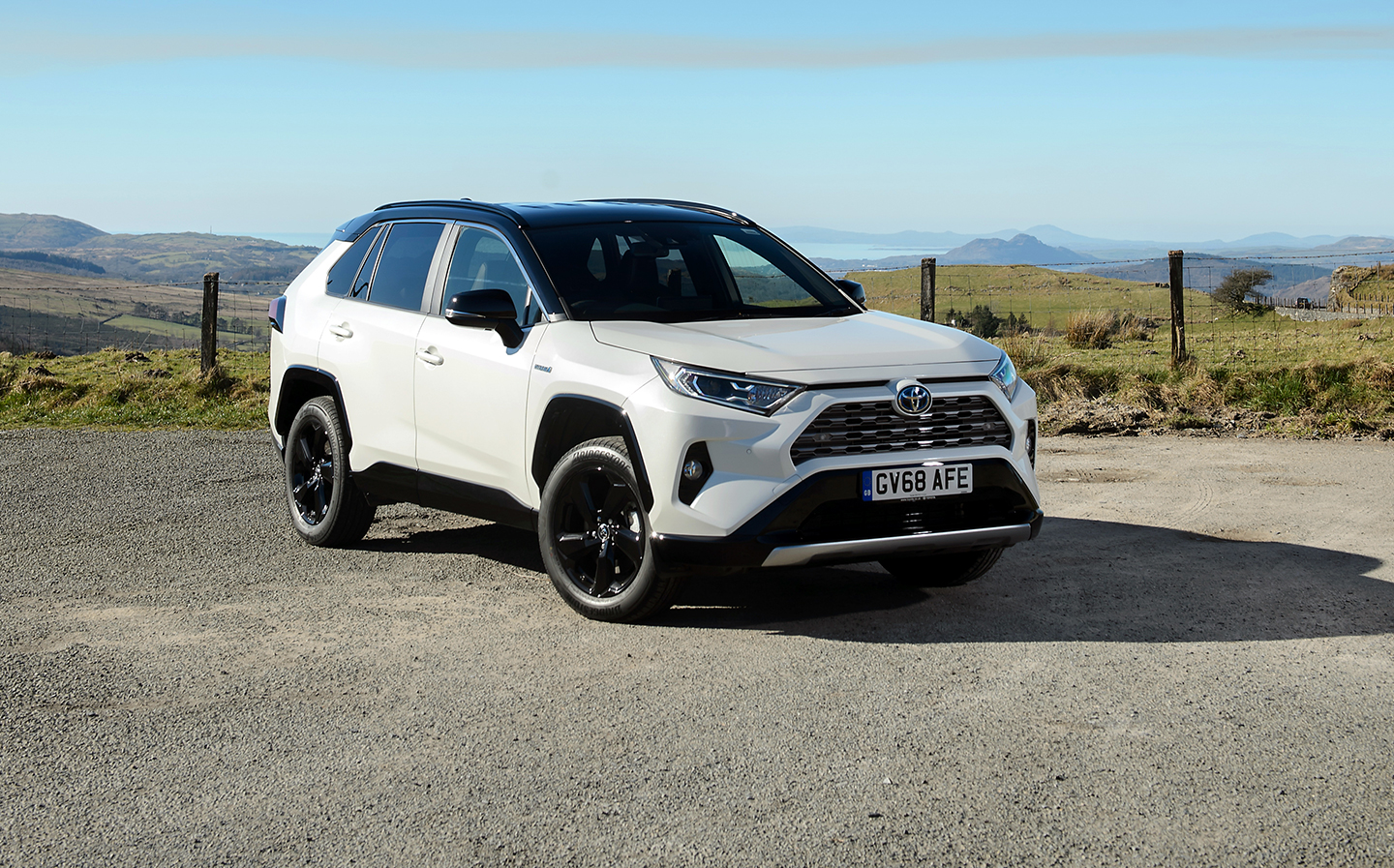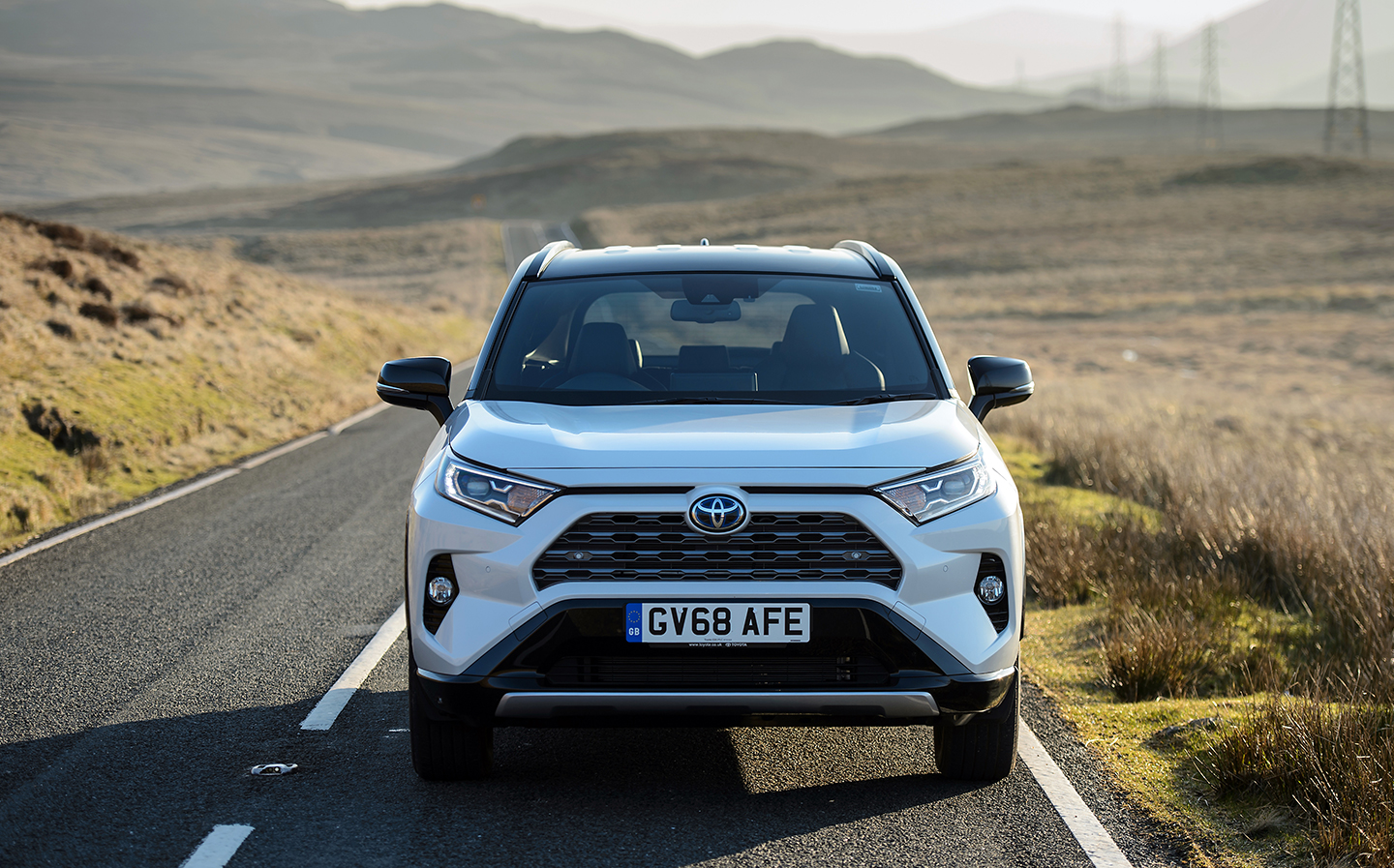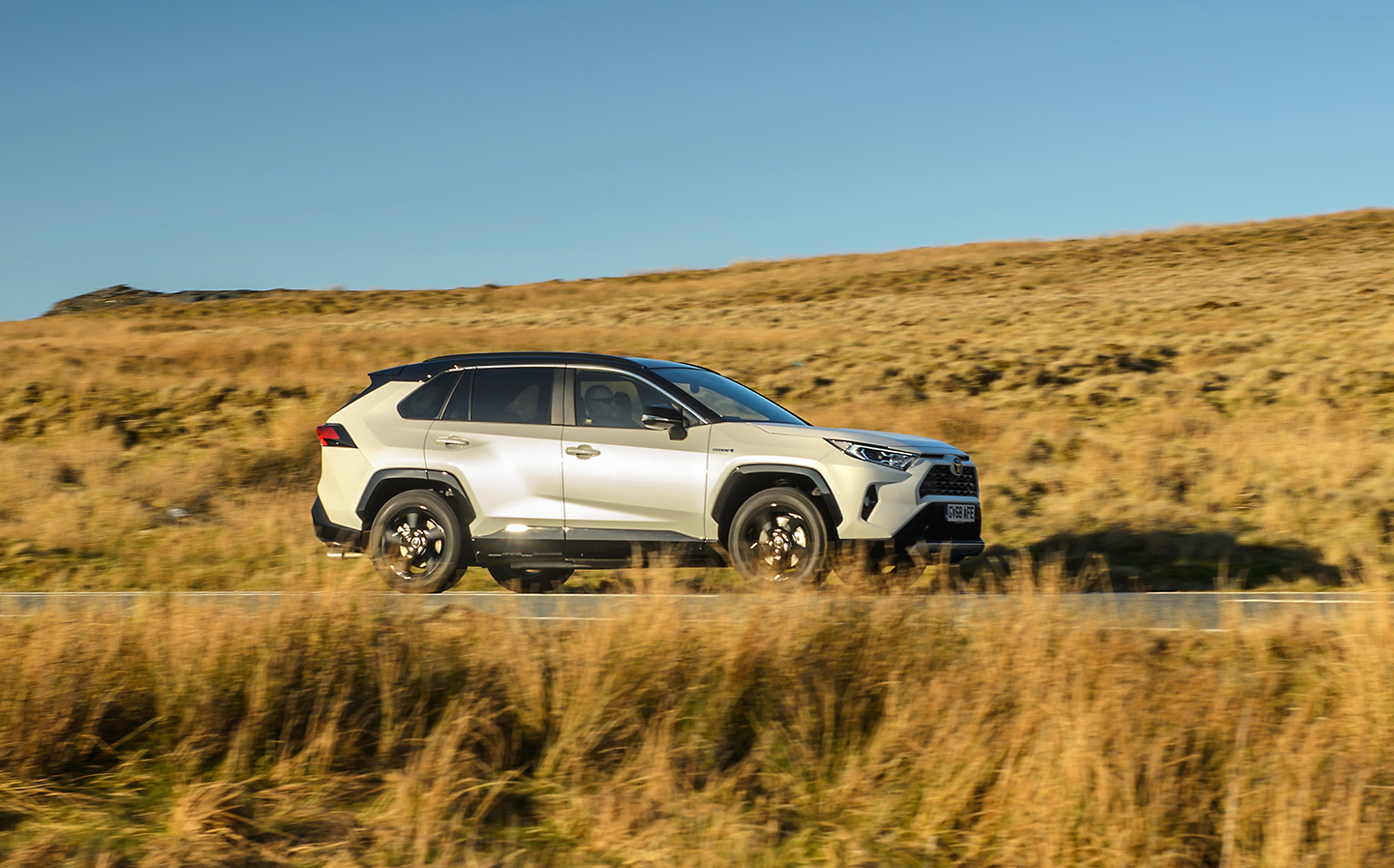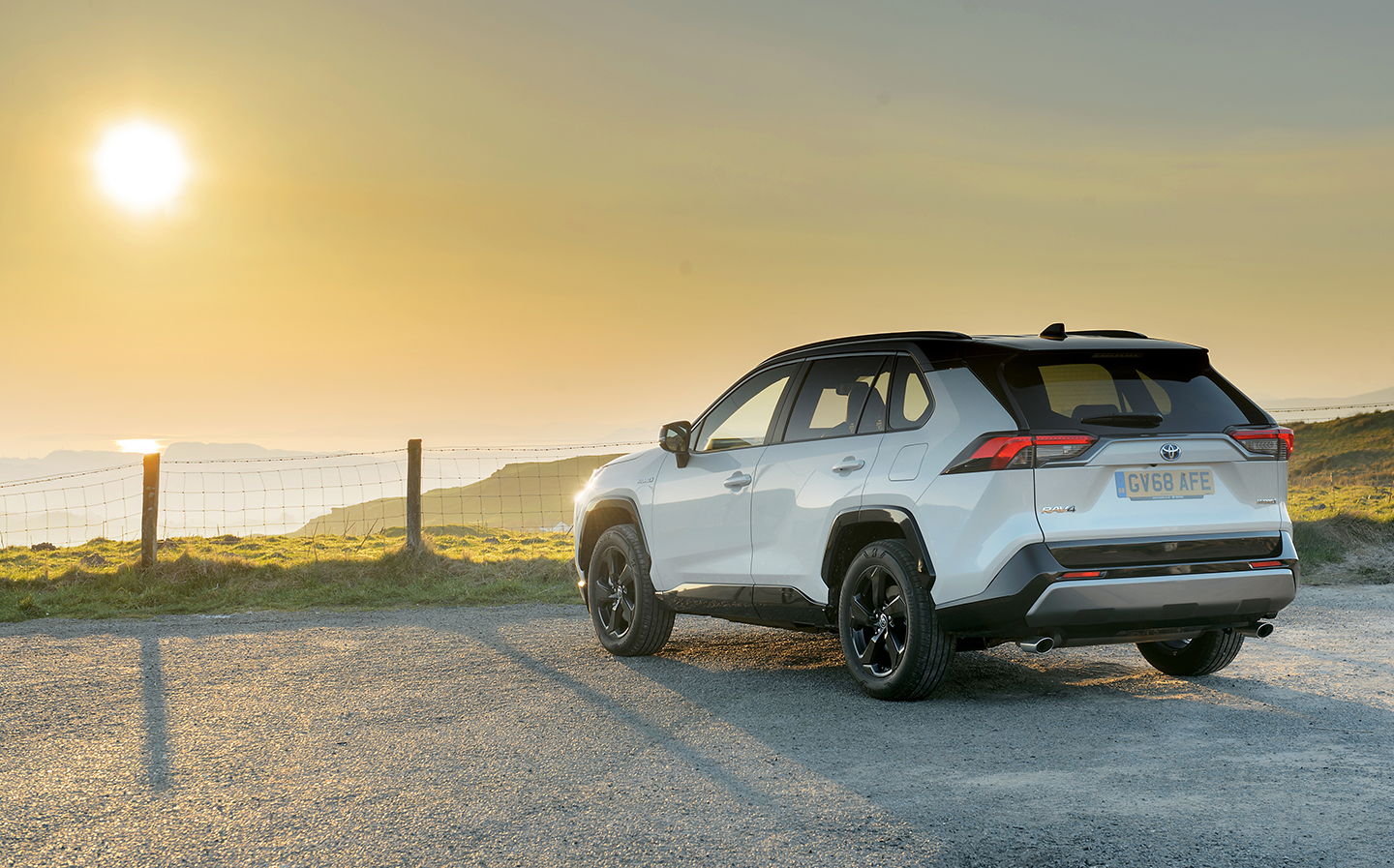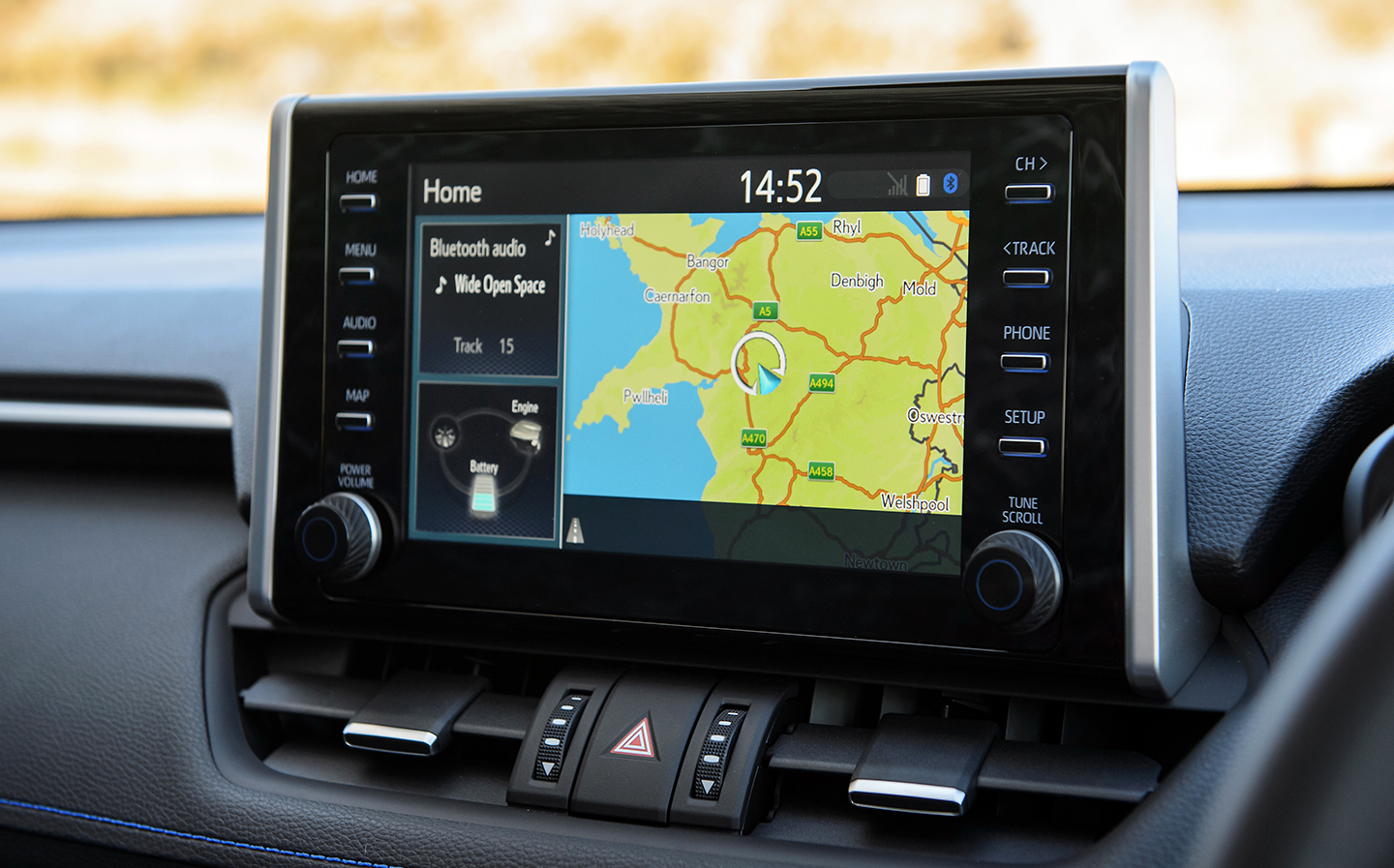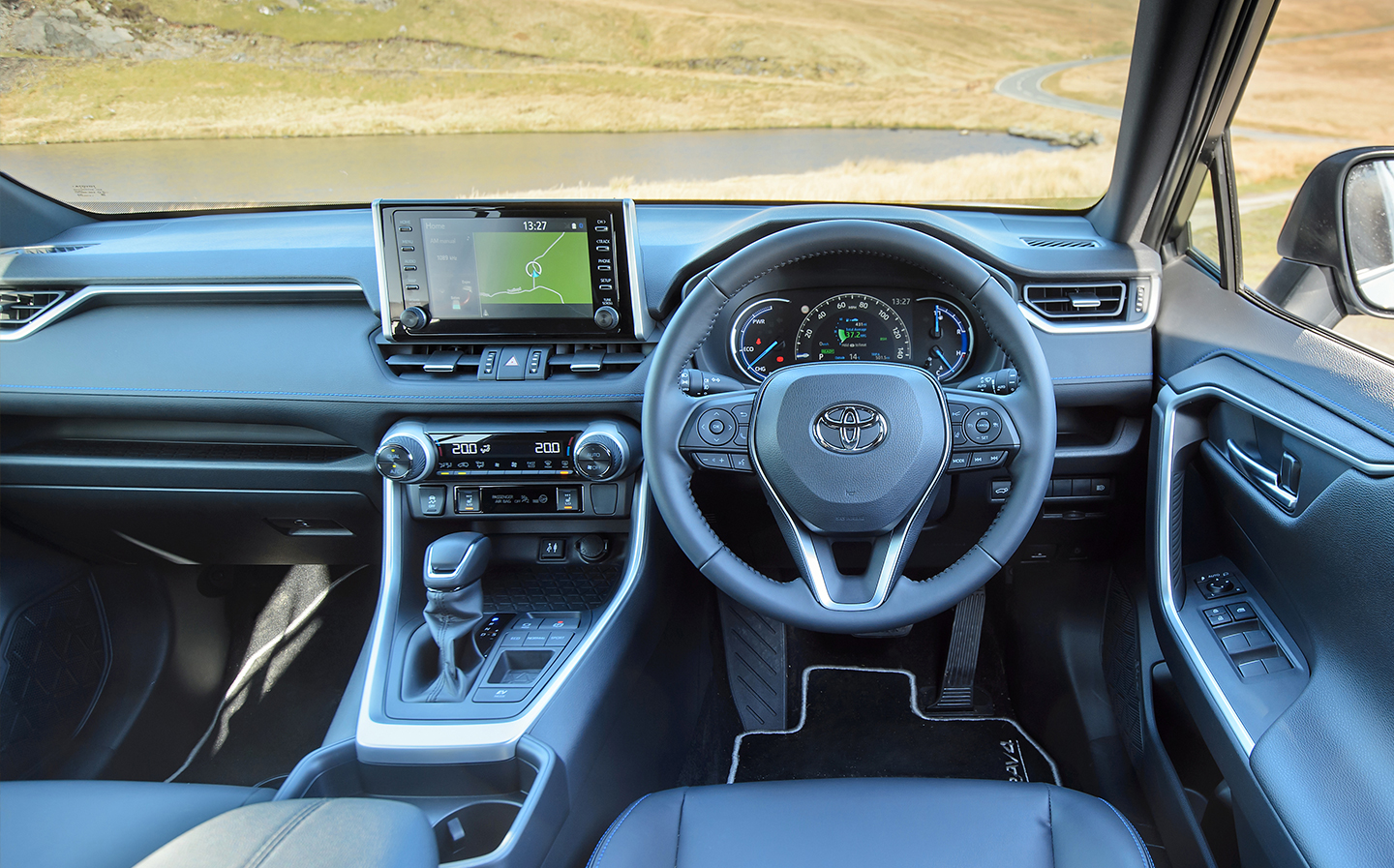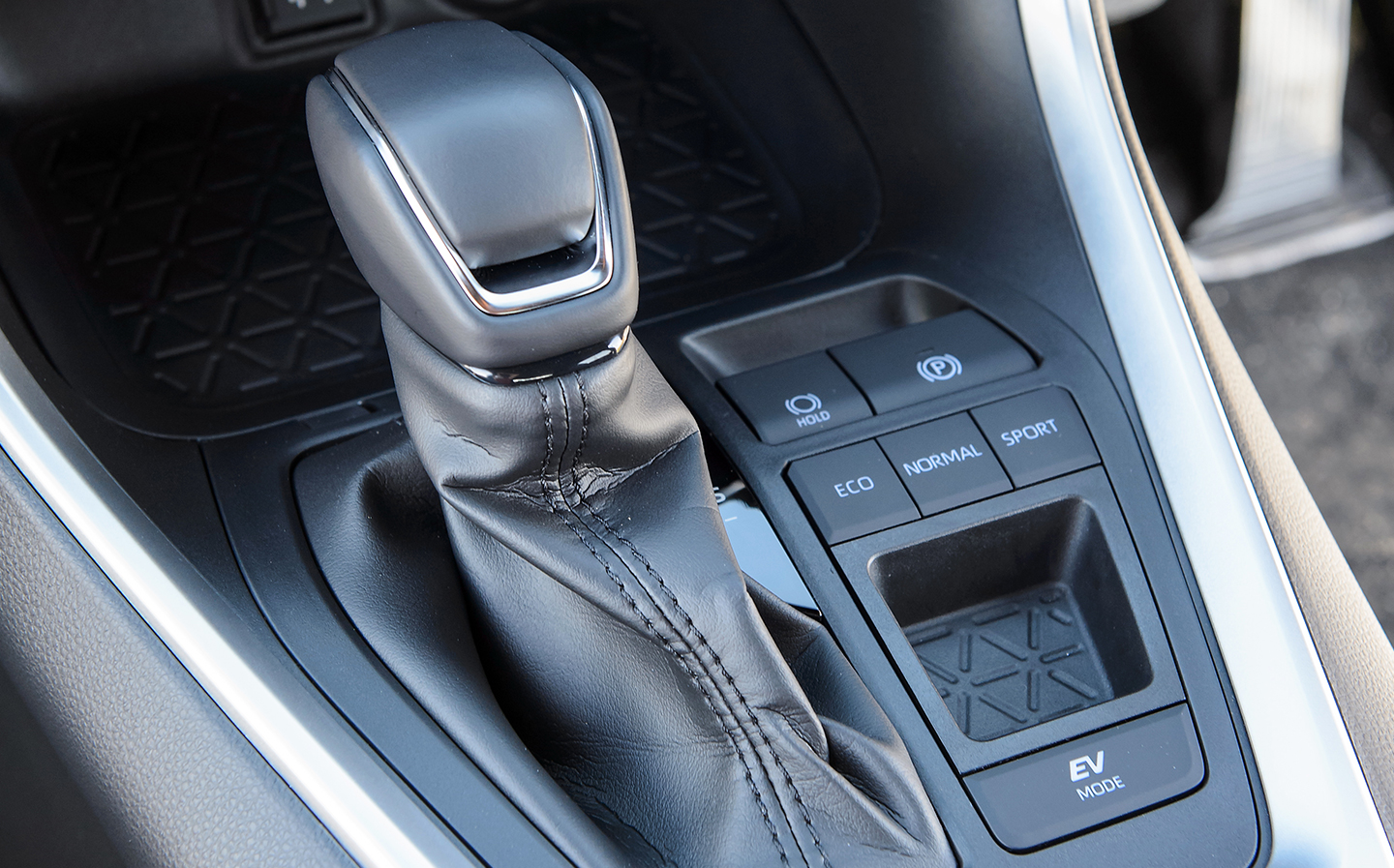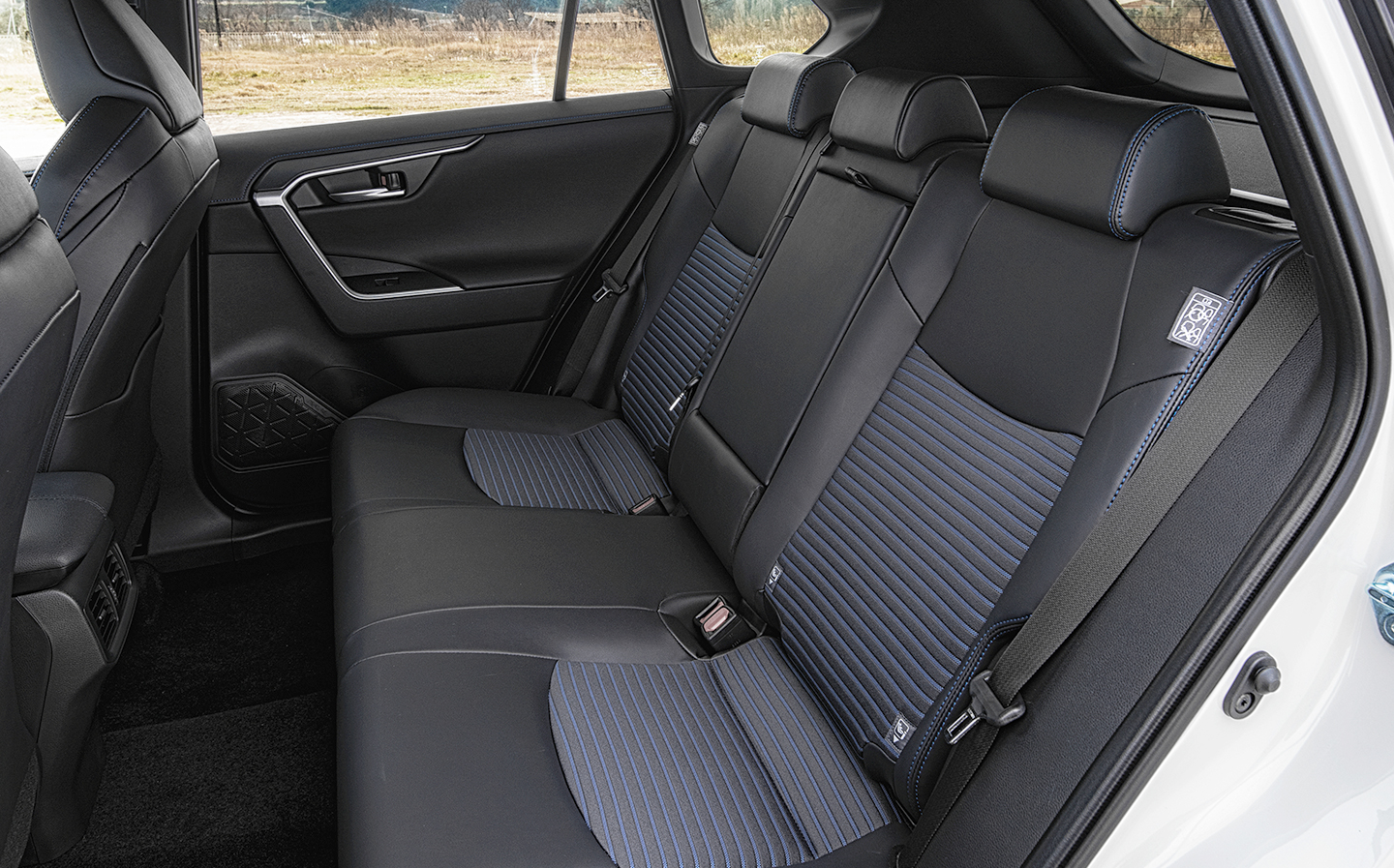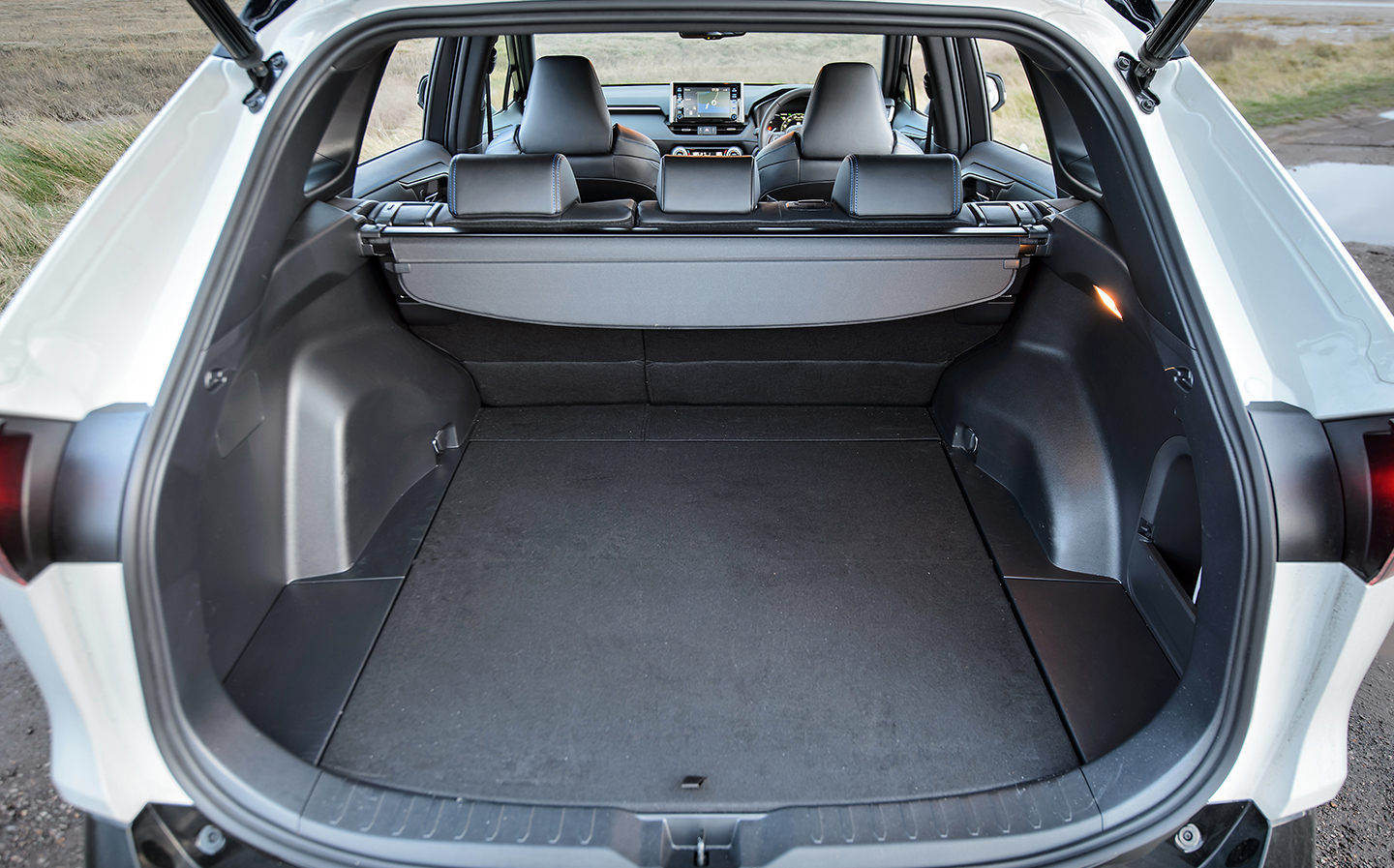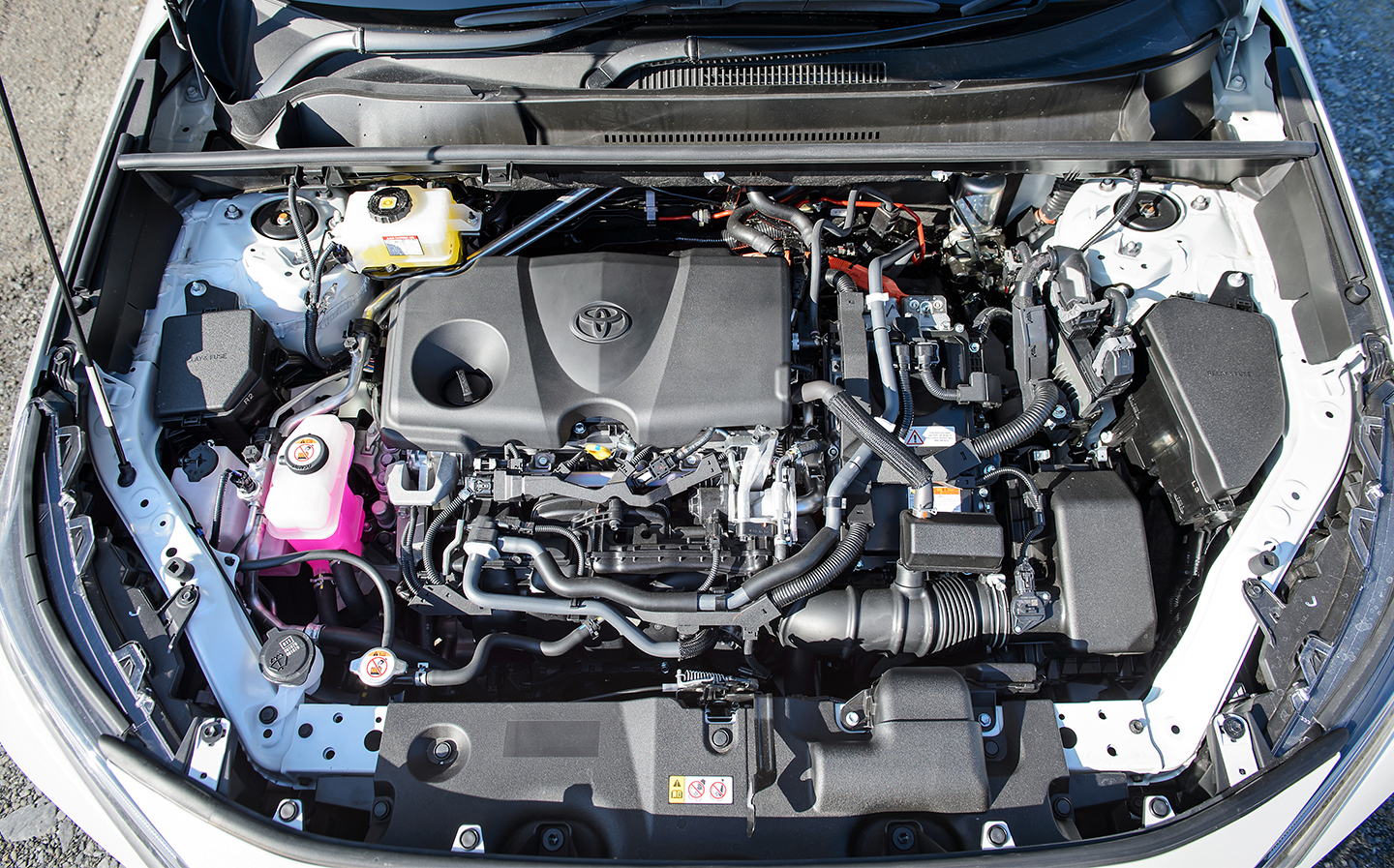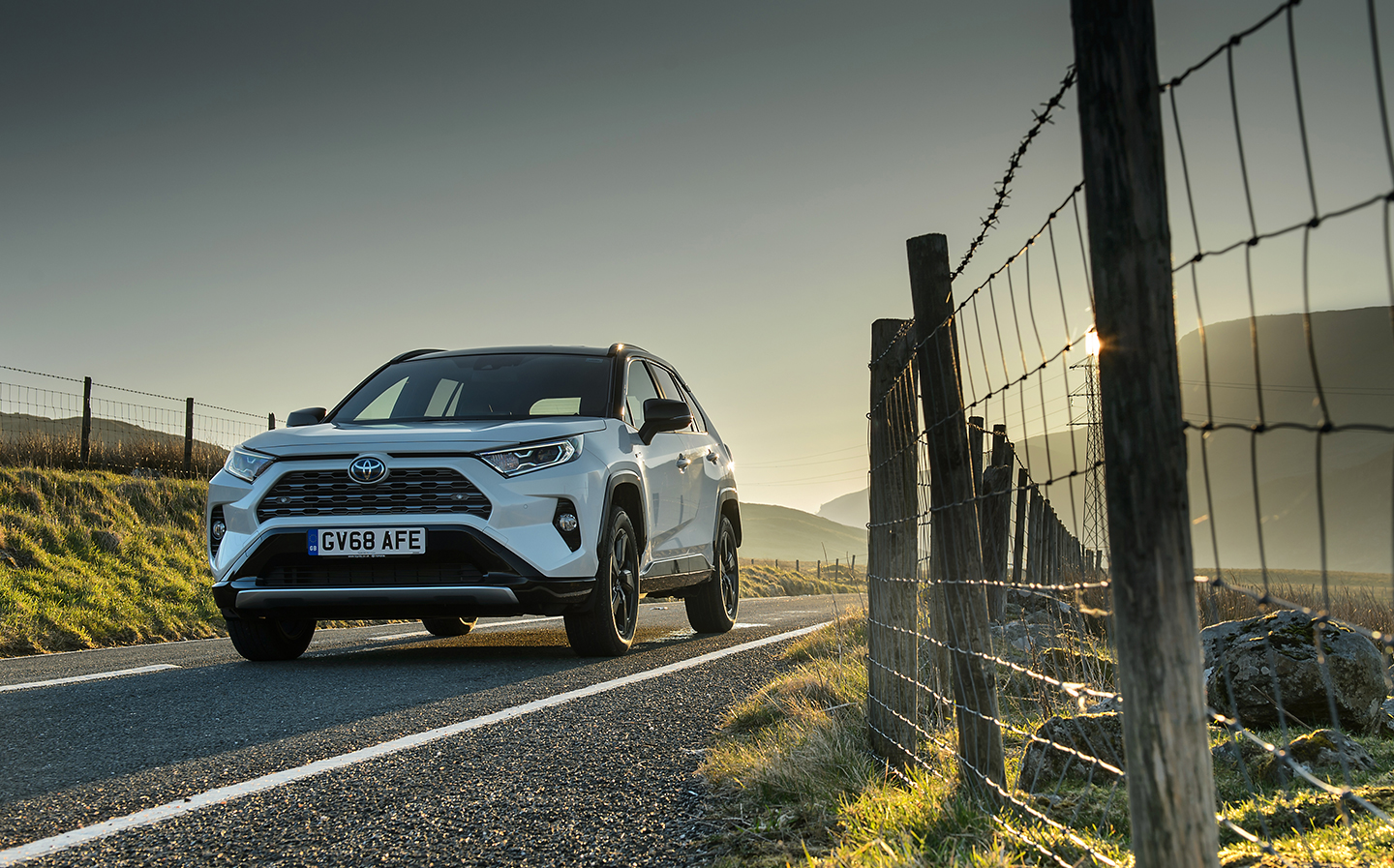2019 Toyota RAV4 Hybrid review
Pointedly practical for families
THE ORIGINAL Toyota RAV4, which was launched in 1994, was a trailblazer. Buyers flocked to the “crossover” (a car with SUV-looks), attracted by its raised driving position, hints of off-road ability and chunky-yet-cutesy styling that meant it stood out in the school car park like a hiking boot on a catwalk.
Fast-forward 25 years and the undeniable popularity of crossovers means the all-new Toyota RAV4 exists in a much more competitive market.
That doesn’t mean it’ll blend in with the sea of school-run SUVs, however — the RAV4’s slab-sided body is far from conventionally pretty (to be kind), but its angular lines, vast size and downturned grille mean it looks more distinctive and imposing than most high-riding family cars.
Peel away the chunky plastic cladding, silver skid-plates and jacked-up body, however, and you’ll find a high-tech hybrid drive system that has more in common with the frugal Toyota Prius than a rough and tough off-roader.
In fact, the RAV4’s 2.5-litre petrol engine and pair of electric motors — which work together to produce 219hp and return just under 50mpg in normal driving conditions — are shared with both the Toyota Camry and Lexus ES.
To help reduce weight and maximise efficiency, 4×4 versions of the RAV4 don’t come with a conventional four-wheel-drive system, either. The petrol engine drives the front wheels with power to the rear being provided by an extra electric motor mounted on the rear axle.
This setup lets the new RAV4 send as much as 80% of the system’s total torque to the rear wheels, while onboard computers can also brake individual wheels to stop them spinning uselessly on slippery or uneven surfaces. Handy if you do have to venture off the beaten track.
Another advantage of the RAV4’s dual-motors is that there’s no physical connection between the engine and the rear wheels. As a result, there isn’t an annoying hump in the rear floor (giving passengers plenty of foot space) and the batteries can be tucked neatly under the back seats to reduce their intrusion into the boot.
This all means the Toyota RAV4’s pretty practical. There’s space in the boot for a family’s weekend luggage and three adults won’t have much to complain about in the back seats. They can even recline the seatbacks by a few degrees if they feel like a snooze.
Thankfully, it’s not just relaxing for passengers — the RAV4’s pretty stress-free to drive, too. It’s quiet at motorway speeds, easy to see out of and the light steering and comfortable suspension help make light work of city driving.
It’s not all good news, though. The clunky infotainment system isn’t a patch on the slick systems you get in alternatives from VW and Skoda, and the standard automatic CVT gearbox causes the engine to drone rather loudly when you accelerate hard.
Go easy on the accelerator and you can keep its intrusion to a minimum. Indeed, the RAV4 can potter around at slow speeds using just its electric motors and will even shut the petrol engine off for brief periods when you’re cruising on motorways or slowing to a stop.
Despite this, it isn’t as economical on long journeys as some conventional diesel-powered alternatives and the weight of its batteries blunts its agility on twisty country roads.
That being said, it’s still an impressively practical family car with eye-catching looks that shows Toyota’s still capable of building a compelling family SUV.
Click to see how much you could save on a Toyota RAV4 at carwow
Toyota RAV4 rivals
Click to see how much you could save on one at carwow


